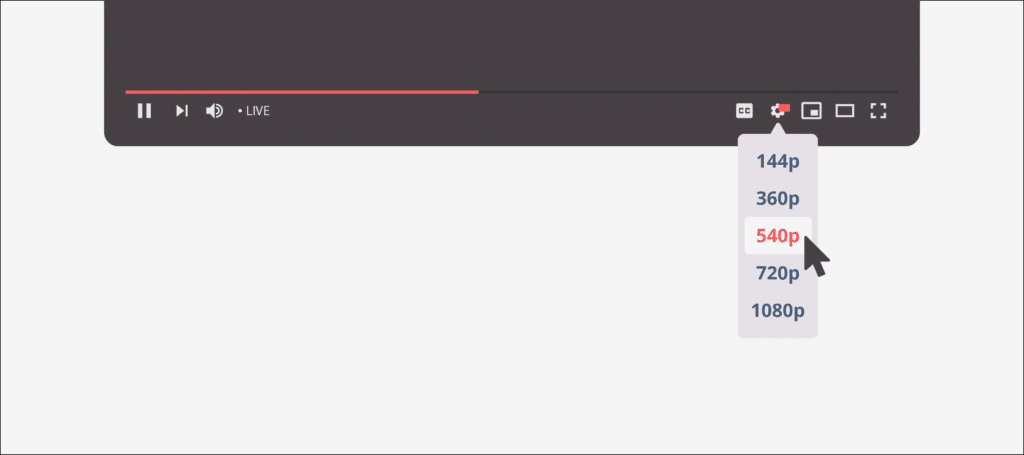
Adaptive bitrate streaming (ABR, also abbreviated as ABS) is a streaming method in which broadcasters offer multiple video streaming bitrates to choose from in real-time. That means that video players with adaptive playback capabilities can dynamically adjust the stream to match the viewer’s available bandwidth, device processing power, and current network conditions.
Best Livestreaming Equipment
Discover what top-rated equipment we recommend adding to your church streaming toolkit.
Download for free!
What Protocols Does Adaptive Bitrate Streaming Use?
ABS is made possible by modern video delivery protocols like HLS and MPEG-DASH. These HTTP-based protocols break down videos into chunks or segments that are usually between 2 to 10 seconds long. That way, the video player can download these video segments progressively in a similar way to how other content is transferred over HTTP. These segments can also be delivered using a content delivery network (CDN) to reduce latency and packet loss.
How is Adaptive Bitrate Streaming Different from Multi-Bitrate Streaming?
Before streaming begins, the video player downloads a manifest file describing the available bitrates and their corresponding segments. For the DASH protocol, this file is called a media presentation description (MPD), while the HLS protocol uses a .m3u8 playlist. Once the video player analyzes the manifest file, it can determine which bitrate is most appropriate to download before playback begins.
How is Adaptive Bitrate Streaming Different from Multi-Bitrate Streaming?
ABS differs from multi-bitrate streaming because with ABS video players can switch between bitrates on the fly. Video players that support ABS have various methods for detecting changes in the viewer’s Internet bandwidth and processing capacity in order to adjust the bitrate up or down automatically. The two most common approaches modern video players use for ABS are throughput and buffer selection algorithms.
- Throughput selection algorithms use the download speed of previous segments to decide which bitrate to download in the future. If the video player estimates that current network conditions are slow and will cause a lack of video content, it will adjust the bitrate down to avoid buffering. The video player can also increase the bitrate if there’s sufficient media already available in the buffer.
- Buffer selection algorithms decide which bitrate to download based on the buffer occupancy. The video player buffer downloads and stores a certain amount of video content ahead of time to ensure a smooth playback, which is measured as the buffer occupancy rate. When the buffer starts running out of media, buffer selection algorithms downgrade the bitrate to increase the buffer occupancy and ensure there’s enough media available.
The Benefits of ABS
ABS is a great way to ensure a high Quality of Experience (QoE) because viewers can watch the highest quality video content based on their unique conditions without any interruptions. That means broadcasters can more easily support viewers using smartphones or tablets with limited processing power and data plans while also offering high resolution streams for others. Most importantly, however, ABS helps eliminate buffering or other interruptions that could negatively impact viewership. Resi’s Livestream Platform supports ABS with both MPEG-DASH and HLS protocols for all plans because it’s essential for achieving the best possible viewing experience. The platform also offers cloud transcoding, which is crucial for creating multiple renditions of a video stream at various bitrates for ABS. With Resi, it’s possible to quickly set up reliable streams that minimize buffering and maximize video quality for viewers around the world.
Best Livestreaming Equipment
Discover what top-rated equipment we recommend adding to your church streaming toolkit.
Download for free!
